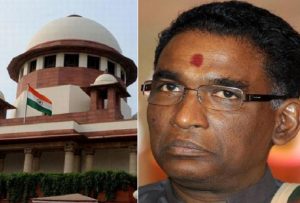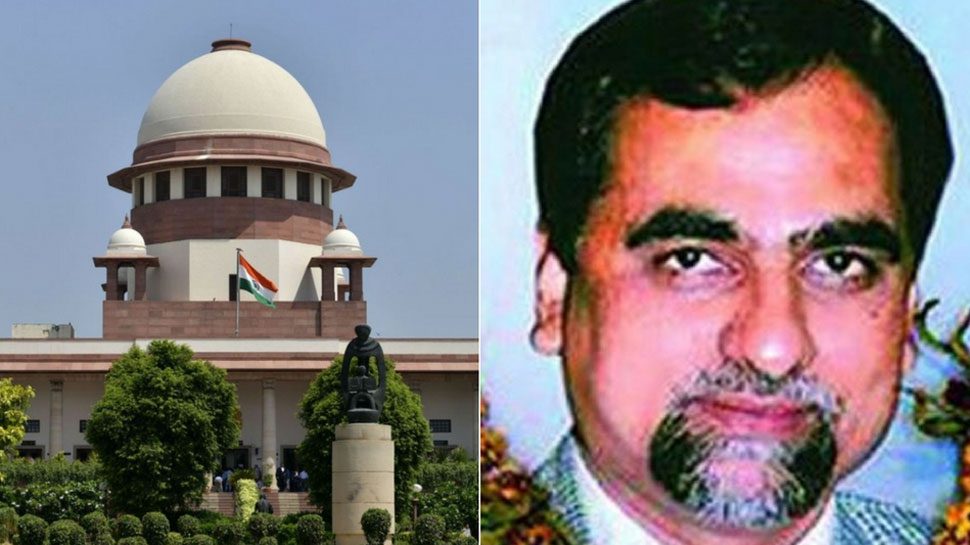The Supreme Court verdict, dismissing the petitions seeking an independent investigation into the death of judge Loya, has everything mentioned by Chief Justice Hewart as a ground for impartiality to get compromised. A bench headed by Chief Justice Dipak Misra found the petitions as an effort to scandalise the judiciary and a “veiled attempt to launch a frontal attack on the independence of the judiciary.” Here’s a report, for Different Truths.
“Justice should not only be done but should manifestly and undoubtedly be seen to be done.” This remark of Lord Chief Justice Hewart of England uttered nearly 100 years ago, is now heard throughout the world of common law. It reflects an ethical requirement that judges must not hear a case if their impartiality might reasonably appear to be compromised in the eye of an informed observer.
The Supreme Court verdict, dismissing the petitions seeking an independent investigation into the death of judge Loya, has everything mentioned by Chief Justice Hewart as a ground for impartiality to get  compromised. A bench headed by Chief Justice Dipak Misra found the petitions as an effort to scandalise the judiciary and a “veiled attempt to launch a frontal attack on the independence of the judiciary”. It felt that filing of the petitions itself amounted to contempt of court, which it was not, however, pursuing as a special gesture.
compromised. A bench headed by Chief Justice Dipak Misra found the petitions as an effort to scandalise the judiciary and a “veiled attempt to launch a frontal attack on the independence of the judiciary”. It felt that filing of the petitions itself amounted to contempt of court, which it was not, however, pursuing as a special gesture.
For those who want to see an agenda in the tone and tenor of the verdict, it is there in significant measure. Justice Loya’s case cannot be considered in isolation to certain recent developments in the higher judiciary, which might become watersheds in the history of Indian judiciary. In fact, the Loya case was central to the unprecedented mutiny by four senior-most judges of the Supreme Court, under the leadership of Justice Chelameswar, alleging questionable procedures being followed by Chief Justice Dipak Misra in sensitive cases. The judges had talked about instances where cases having far-reaching consequences for the nation and the institution had been assigned selectively to benches without any rational basis and warned that the tendency must be guarded against at all costs.
So by presiding over the bench that heard the petitions demanding an investigation into the death of Justice Loya, the Chief Justice has done whatever his four senior colleagues were objecting to. That would qualify as a clear case of conflict of interest. In other words, it satisfies Lord Hewart’s ground for impartiality getting compromised. And that was clear from the verdict as well. By coming down heavily against the attempt to reopen the Loya case, the bench was also flashing a message for the rebellious judges, who had claimed at their controversial press conference that they were placing the facts before the people’s court after having failed to check the undesirable practices in assigning roster work.
In another conflict of interest situation, instead of keeping off a case with which he was connected at an earlier stage, the Chief Justice changed a court that was scheduled to hear a petition seeking a SIT probe as ordered by Justice Chelameswar to a larger bench. The next stage in the sequence had the new bench rescinding Chelameswar’s order. Two of the judges recused themselves from hearing the petition. The Chief Justice used his administrative power to change the bench, despite the petitioner specifically seeking that he should not be hearing the case. The ethical requirement insisted on by Lord Hewart demanded that Dipak Misra voluntarily stayed off, but that was not to be.
earlier stage, the Chief Justice changed a court that was scheduled to hear a petition seeking a SIT probe as ordered by Justice Chelameswar to a larger bench. The next stage in the sequence had the new bench rescinding Chelameswar’s order. Two of the judges recused themselves from hearing the petition. The Chief Justice used his administrative power to change the bench, despite the petitioner specifically seeking that he should not be hearing the case. The ethical requirement insisted on by Lord Hewart demanded that Dipak Misra voluntarily stayed off, but that was not to be.
There have also been other instances of agenda-driven verdicts being issued by judges in recent times. We have had the curious case of one bench questioning the legal wisdom of another bench of the same numerical strength, with one bench belonging to the Establishment group and the other to the dissenting group.
In a 2014 case involving Pune Municipal Corporation relating to the Land Acquisition Act, a three-judge bench led by the Chief Justice of India R M Lodha, including Justice Kurian Joseph, one of the revolting judges in the Chelameswar camp, issued a majority verdict that a land acquisition would be deemed to have lapsed if compensation for the acquired land had not been paid to the landowner or deposited with a competent court and retained in the treasury. But in a verdict issued recently, a three-judge bench led by Justice Arun Mishra, one of the so-called ‘preferred’ benchers, overturned the 2014 judgment saying it  had been pronounced without due regard to law and ruled that the Central government had authority over an acquired land even if the compensation was not paid. The latest decision, however, broke the convention that Supreme Court benches of the same numerical strength cannot overrule each other’s judgments. In case of any difference, it can only be referred to a bench of larger strength.
had been pronounced without due regard to law and ruled that the Central government had authority over an acquired land even if the compensation was not paid. The latest decision, however, broke the convention that Supreme Court benches of the same numerical strength cannot overrule each other’s judgments. In case of any difference, it can only be referred to a bench of larger strength.
The ugly turn of events had a three-member bench headed by whistleblower judge Justice Madan B Lokur, which included Justice Kurian, criticising Justice Mishra’s bench for ‘tinkering with judicial discipline’. Justice Kurian went to the extent of saying in the open court that such action would eventually cost the judicial institution. He emphasised that the correctness of a judgment can be doubted but a bench of similar strength cannot hold a judgment rendered by another bench as wrong. One can clearly see agendas at work here.
These are but some of the typical instances of justice not seen delivered, even though it may have been delivered. There is a substantial difference between the two situations, which have a major bearing on the credibility of the judiciary.
K. Raveendran
©IPA Service
Photos from the Internet
#Judiciary #Judge #Justice #SupremeCourtVerdict #CheifJustice #JudgeLoya #DifferentTruths





 By
By
 By
By
 By
By